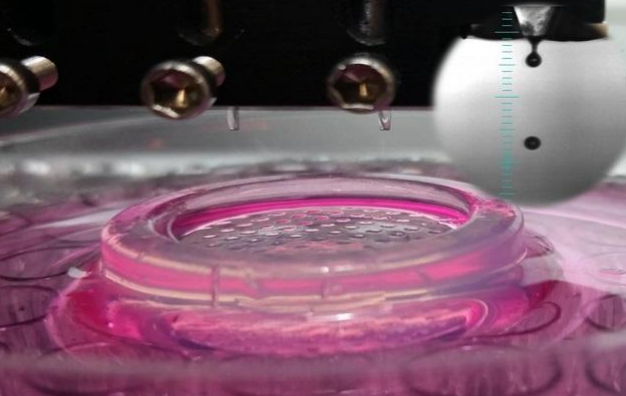
A study summary shows that 3D printing can help bladder growth
Think 3D printing can only hit some ornaments and toys? Bioengineering first expressed dissatisfaction.
According to a special issue published this month in Biotechnology Trends, the application of 3D “bioprinting†technology has become more widespread in the field of vascular and artificial skin insertion. The reason for this progress is partly due to the development of "organ-on-a-chip" technology - an affordable micro-engineering architecture that supports the growth of human tissue.
Lung, intestine, and pancreas tissues can all grow on a professional chip for human stem cells. It also allows researchers to understand the physiological differences between different patients and to test the efficacy of new drugs. In fact, producing such a chip is a manufacturing challenge, but 3D printing technology can reduce production time and costs.
Savas Tasoglu is an assistant professor at the University of Connecticut. His main research direction is the development and application of 3D printing in the field of microfluidics. He said:
3D printing technology for microfluidic manufacturing and bioprinting of 3D human tissues has now reached a crossroads. In the future, this technology will be very helpful for single-step simulation of human organ chip engineering, and it will also bring great flexibility and productivity to academic research.
Skin bioprinting technology has also begun to attract attention. Although researchers are at the initial stage of the design process, this technology can already help patients to treat burns or chronic wounds. Wei Long Ng from Nanyang Technological University in Singapore and colleagues from the Singapore Science and Technology Research Bureau stated that:
Now is the time to use sophisticated machine controls to create human tissue engineering architecture.
However, human bones, cartilage, skin, muscles, blood vessels and nerves can only be printed out in the laboratory. The construction of more complex human tissue structures that can help patients is still in the development stage. The craniofacial reconstruction technology will help those who have had cancer or have experienced facial injuries, so many technicians are embarking on research in this area.
It is claimed that in the short term, the 3D printed cell "bracket" can be used to improve the chin, as well as defects in other areas of the human face. But in the long term, surgeon Dafydd Visscher and his colleagues at the Free University Medical Center in Amsterdam believe that they still need to be based on preclinical research, smart polymers, and bioprinting structures that can support production. A long way to go.
On the other hand, 3D bioprinting technology can also help people evaluate the efficacy of new drugs. For example, 3D bioprinting can create "organelles" composed of different cell types, as well as tumor models with engineered blood vessels. With the support of 3D bioprinting technology, it is possible to monitor drug interactions in different organs under real-time conditions, and the speed of drug development will be accelerated.
Ibrahim Ozbolat and Weijie Peng of Pennsylvania State University and Derya Unutmaz of the Jackson Genome Medical Laboratory said:
As advanced bioprinting technology develops faster and faster, in the next decade, manufacturing technologies related to human tissue models will have a huge impact on medical development. 3D printing will also become an important tool.
Although 3D printing has progressed, researchers have emphasized that the technology still faces many challenges. The use of 3D blood vessel networks created by biological tissue engineering requires ensuring compatibility with other organs after implantation in humans; in addition, this vascular network also requires arterial or venous tissue that can be directly connected to the patient.
Jeroen Rouwkema and Ali Khademhosseini, bioengineers graduates from Harvard and MIT, said:
Currently, 3D-printed blood vessels are one of the most urgent problems to overcome in human tissue engineering applications, and are also the major obstacles to achieving large-scale production.
VIA theiet
Recommended reading:
Think very fear! U.S. experts use 3D printing technology to unlock dead cell phones to help police solve crimes
Belgian Doctor Makes World's First 3D Print Eyes
